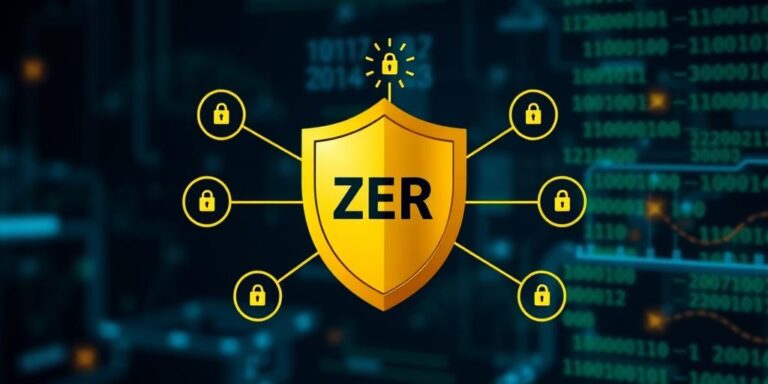Zero Trust Architecture: The Gold Standard by 2025
In an era defined by increasingly sophisticated cyber threats and the evolving landscape of remote work, traditional security models are proving inadequate. Organizations are now pivoting towards a more robust and adaptive approach: Zero Trust Architecture (ZTA). By 2025, Zero Trust is poised to become the gold standard for cybersecurity.
What is Zero Trust Architecture?
Zero Trust is not a specific technology but a security framework based on the principle of “never trust, always verify.” Unlike conventional models that assume trust within the network perimeter, ZTA operates on the assumption that threats can originate from both inside and outside the organization. This paradigm shift necessitates rigorous verification for every user, device, and application attempting to access network resources, regardless of their location.
Key Principles of Zero Trust:
- Assume Breach: Recognize that threats are ever-present, and design defenses accordingly.
- Explicit Verification: Verify every user and device before granting access.
- Least Privilege Access: Grant only the minimum level of access required to perform a specific task.
- Microsegmentation: Divide the network into smaller, isolated segments to limit the blast radius of potential attacks.
- Continuous Monitoring: Continuously monitor and assess security posture to detect and respond to threats in real-time.
Why Zero Trust is Becoming the Gold Standard
- Enhanced Security Posture: ZTA significantly reduces the attack surface by minimizing implicit trust and enforcing strict access controls. This makes it harder for attackers to move laterally within the network.
- Adaptability: Zero Trust is designed to adapt to evolving threats and changing business needs. Its flexible framework can be tailored to fit organizations of all sizes and industries.
- Compliance: Many regulatory frameworks and industry standards, such as GDPR and HIPAA, require organizations to implement robust security measures. ZTA can help meet these compliance requirements by providing a comprehensive and auditable security framework.
- Support for Remote Work: With the rise of remote work, traditional perimeter-based security models are becoming obsolete. ZTA enables secure access to resources from any location, on any device, without compromising security.
Implementing Zero Trust
Implementing ZTA is a journey, not a destination. It requires a phased approach that begins with assessing the organization’s current security posture and identifying critical assets. Here are the general steps:
- Assess Current State: Evaluate existing security infrastructure, policies, and procedures.
- Define Scope: Identify the specific assets and resources to be protected.
- Design Architecture: Develop a Zero Trust architecture that aligns with the organization’s needs and risk profile.
- Implement Controls: Deploy security controls such as multi-factor authentication, microsegmentation, and identity and access management (IAM) solutions.
- Monitor and Optimize: Continuously monitor the effectiveness of security controls and make adjustments as needed.
Challenges and Considerations
While ZTA offers significant benefits, it also presents several challenges:
- Complexity: Implementing ZTA can be complex and require significant expertise.
- Cost: Deploying the necessary technologies and resources can be costly.
- User Experience: Strict access controls can impact user productivity if not implemented carefully.
Conclusion
Zero Trust Architecture is rapidly emerging as the gold standard for cybersecurity. Its ability to enhance security posture, adapt to evolving threats, and support remote work makes it an essential framework for organizations seeking to protect their assets in today’s digital landscape. By 2025, organizations that have not adopted Zero Trust will be at a significant disadvantage. Embracing ZTA is not just a security imperative but a strategic business decision.




